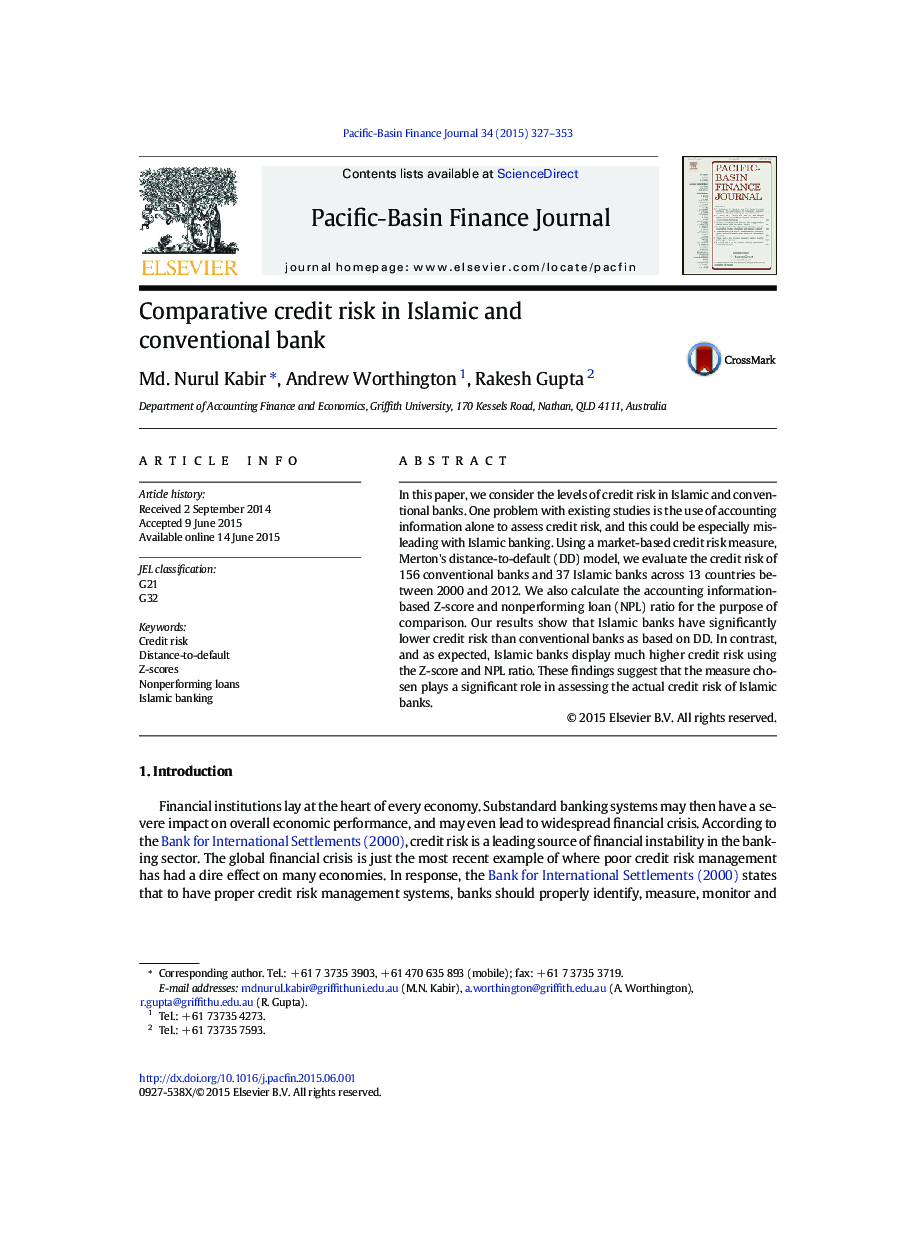| Article ID | Journal | Published Year | Pages | File Type |
|---|---|---|---|---|
| 975322 | Pacific-Basin Finance Journal | 2015 | 27 Pages |
•We compare credit risk in Islamic and conventional banks.•Islamic banks have lower credit risk using market-based credit risk measures.•Islamic banks have higher credit risk using accounting-based credit risk measures.•During GFC, no significant difference in Islamic and conventional bank credit risk•Choice of method plays a vital role in measuring credit risk in banking.
In this paper, we consider the levels of credit risk in Islamic and conventional banks. One problem with existing studies is the use of accounting information alone to assess credit risk, and this could be especially misleading with Islamic banking. Using a market-based credit risk measure, Merton's distance-to-default (DD) model, we evaluate the credit risk of 156 conventional banks and 37 Islamic banks across 13 countries between 2000 and 2012. We also calculate the accounting information-based Z-score and nonperforming loan (NPL) ratio for the purpose of comparison. Our results show that Islamic banks have significantly lower credit risk than conventional banks as based on DD. In contrast, and as expected, Islamic banks display much higher credit risk using the Z-score and NPL ratio. These findings suggest that the measure chosen plays a significant role in assessing the actual credit risk of Islamic banks.
